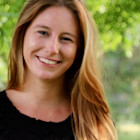FDA Sets Stricter Guidelines for Lead Limits in Baby Food
When it comes to picking the best food for your baby, the options can be overwhelming. But what’s even more concerning is the potential for harmful heavy metals to be lurking in those tiny jars and pouches. Research from nonprofit Healthy Babies Bright Futures (HBBF) recently found toxic metals in 95 percent of store-bought baby food. One of the biggest offenders—lead. Studies have shown children under two are especially vulnerable to lead, and its potential health effects from behavior difficulties to cardiovascular effects.
FDA Sets New Lead Limits on Baby Food
In response to growing concerns, the Food and Drug Administration (FDA) has established stricter guidelines to reduce lead levels in baby food. The new guidelines set limits of:
- 10 parts per billion (ppb) for fruits, vegetables (excluding single-ingredient root vegetables), mixtures (including grain and meat-based mixtures), yogurts, custards/puddings, and single-ingredient meats.
- 20 ppb for single-ingredient root vegetables and dry cereals.
“For babies and young children who eat the foods covered in today’s draft guidance, the FDA estimates that these action levels could result in as much as a 24-27 percent reduction in exposure to lead from these foods,” said FDA Commissioner Robert M. Califf, MD, in a announcement outlining the new levels.
These limits apply to processed foods such as purees, dry infant cereals and ready-to-eat products packaged in jars, pouches, tubs or boxes. However, it’s important to note that the FDA’s guidelines are not enforceable, leaving the onus on manufacturers to comply voluntarily.
California Leads the Way With Other Companies Following Suit
While the FDA’s limits aim to reduce exposure on a national scale, California has introduced its own measures to address toxic metals in baby food and hold manufacturers accountable. A new law now requires baby food manufacturers to test samples of infant and toddler foods (excluding infant formula) monthly using accredited labs for levels of arsenic, cadmium, lead and mercury.
As of January 1, manufacturers must make these test results available to the public on their websites. Parents can easily access this information by scanning a QR code printed on baby food packaging with their smartphones. Although the law applies only to sales within California, major manufacturers like Gerber and Beech-Nut are rolling out QR codes nationwide, ensuring more parents have access to this critical transparency.
Room for Improvement
Despite the progress, many experts believe there’s still more work to be done. “Nearly all baby foods already meet the action levels the FDA lays out in this draft,” HBBF’s Research Director Jane Houlihan said in a release addressing the guidelines. In fact, only 16 of the over 1,000 baby foods the organization has tested have levels of lead that exceed the FDA’s proposed limits. Those that exceed these levels—some of the most hazardous products, like grain-based snacks—are not included in the guidelines.
The FDA’s Closer to Zero action plan is focused on reducing dietary exposure to contaminants to as low as possible, while maintaining access to nutritious foods. The new limits, though imperfect, are a step toward safer baby food and could set a precedent for addressing heavy metals in other food categories in the future.
Want to take steps toward better food for your baby now? Learn more about what pediatricians have to say about heavy metals in baby food, including how you can minimize your infant’s exposure to them.
Please note: The Bump and the materials and information it contains are not intended to, and do not constitute, medical or other health advice or diagnosis and should not be used as such. You should always consult with a qualified physician or health professional about your specific circumstances.
Navigate forward to interact with the calendar and select a date. Press the question mark key to get the keyboard shortcuts for changing dates.




















































